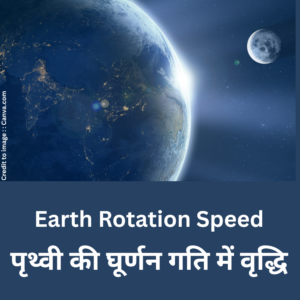The Narmada River, often revered as the “Life Line of Madhya Pradesh and Gujarat,” is one of India’s most sacred and ecologically vital rivers. Flowing westward across the heart of India, the river holds deep Hindu mythological importance and supports millions through its rich biodiversity, agricultural benefits, and water management systems. This article explores the scientific, religious, ecological, and cultural dimensions of the Narmada River.
Introduction: The Narmada River – A Westward Wonder or Flows in western direction or towards Arabian Sea
The Narmada River is western flowing river . One of the rivers in India that flows westward or western direction or towards the Arabian Sea. Originating from the Amarkantak Plateau in Madhya Pradesh, it traverses over 1,312 kilometers, creating a natural boundary between North and South India. Known for its scenic beauty, mythological reverence, and rich biodiversity, the Narmada River is not just a geographical entity but a spiritual and ecological marvel.
“Narmada River History, Biodiversity, Mythology, and Climate Impact in India”
Hindu Mythology of Narmada River: Daughter of Lord Shiva
In Hindu mythology, the Narmada is not merely a river but a goddess. According to legends, she was born from the sweat of Lord Shiva during his meditative dance (Tandava). Known as Reva, the river is believed to cleanse one’s sins merely by sight—unlike the Ganga, where bathing is essential.
Mythological Highlights:
Considered holier than Ganga in some scriptures.
Parikrama (circumambulation) of the Narmada River is a sacred pilgrimage.
Temples like Omkareshwar Jyotirlinga and Maheshwar are situated on its banks.
Associated with divine feminine power (Shakti).
Geographic and Hydrological Features of Narmada River
| Feature | Details |
| Origin | Amarkantak Plateau, Madhya Pradesh |
| Total Length | 1,312 kilometers |
| States Covered | Madhya Pradesh, Maharashtra, Gujarat |
| Mouth | Arabian Sea near Bharuch, Gujarat |
| Tributaries | Tawa, Hiran, Barna, Shakkar |
| Major Dams | Sardar Sarovar, Indira Sagar, Bargi |
Scientific Data Table: Narmada River
| Parameter | Value/Observation |
| Average Annual Rainfall | 1,200 mm – 1,600 mm |
| Basin Area | 98,796 sq. km |
| Soil Types | Black cotton, alluvial, red, and laterite soils |
| Average Flow Volume | 33.2 billion cubic meters annually |
| River Flow Direction | East to West |
| Type of River | Peninsular (Non-Himalayan) |
Role of Narmada River in Climate and Biodiversity
The Narmada basin is rich in forests, wetlands, and grasslands that play a crucial role in regional climate moderation and biodiversity conservation.
Biodiversity Hotspots
Satpura and Vindhya Ranges on either side of the river harbor leopards, sloth bears, barasinghas, and endemic flora.
Home to over 100 species of fish and 300+ bird species.
Climate Relevance
Helps maintain soil moisture and groundwater recharge.
Acts as a natural air conditioner through evapotranspiration from riparian forests.
Carbon sequestration through forested catchments.
Table: Narmada River’s Role in Biodiversity Conservation
| Ecosystem/Area | Importance |
| Narmada Valley Forests | Habitat for tigers, sloth bears, and birds |
| Wetlands near Bharuch | Crucial for migratory birds and fish |
| Amarkantak Region | Source of endemic flora |
| Sardar Sarovar Reservoir Area | Biodiversity buffer and fish breeding ground |
Table: Major Dams and Hydro Projects on Narmada River
| Dam Name | Location (State) | Purpose | Year of Completion |
| Sardar Sarovar | Gujarat | Irrigation, Power, Water | 2017 |
| Indira Sagar | Madhya Pradesh | Power Generation | 2005 |
| Omkareshwar Dam | Madhya Pradesh | Power, Irrigation | 2007 |
| Bargi Dam | Madhya Pradesh | Irrigation | 1990 |
Cultural and Economic Importance of Narmada River
Agriculture: Supports the cultivation of wheat, rice, soybeans, and sugarcane.
Industry: Supplies water to several industrial zones in MP and Gujarat.
Pilgrimage: Cities like Maheshwar, Omkareshwar, and Ujjain are religiously significant.
Narmada Parikrama: A spiritual circuit of ~3,000 km walked barefoot over 3-6 months.
Frequently Asked Questions (FAQs)
Q1. Why is the Narmada River considered sacred?
Ans. The Narmada is considered sacred because of its origin from Lord Shiva’s body and its purifying powers. It is personified as Goddess Narmada in Hinduism.
Q2. Which states does the Narmada River flow through?
Ans. It flows through Madhya Pradesh, Maharashtra, and Gujarat.
Q3. What are the major dams built on the Narmada River?
Ans. Sardar Sarovar, Indira Sagar, Omkareshwar, and Bargi are key dams built on the river.
Q4. How does the Narmada River help in biodiversity conservation?
Ans. Its riparian forests, wetlands, and valleys serve as natural habitats for hundreds of plant and animal species.
Q5. What is Narmada Parikrama?
Ans. A sacred pilgrimage where devotees walk along both banks of the river, believed to purify the soul.
Summary
The Narmada River is not just a water body—it is a spiritual symbol, ecological treasure, and economic backbone for Central India. From its mythological origins to its modern-day importance in irrigation, hydropower, and biodiversity, Narmada continues to flow with eternal grace. As we understand and honor her role, it becomes essential to adopt sustainable practices that protect this ancient river for future generations.
References
- Central Water Commission, Government of India Reports
- Narmada Valley Development Authority (NVDA), MP
- “Sacred Waters: A Study of Narmada Parikrama” by Dr. Meenakshi Jain
- WWF India – Freshwater and River Biodiversity Reports
- National Geographic India – Rivers and Biodiversity
- Forest Survey of India – Madhya Pradesh and Gujarat Forest Profiles
PRAKRITI DARSHAN-NATURE AND ENVIRONMENT MAGAZINE
Prakriti Darshan is a leading Hindi-language magazine and digital platform dedicated to raising public awareness on vital issues related to nature, biodiversity, climate change, sustainable development, and environmental conservation. This magazine represents a unique blend of science, society, and sensitivity—offering a common platform for researchers, students, NGOs, policymakers, nature lovers, and conscious citizens alike.
With thought-provoking articles, inspiring stories, environmental research, impactful projects, and policy perspectives, Prakriti Darshan is a transformative journey toward a greener and more sustainable future.
Let us come together to protect and preserve our planet for generations to come. 🌿🌍
Join us in our mission to protect and celebrate the planet. 🌏💚
Click for more information
- Visit www.prakritidarshan.com for Free Magazine ,Free membership benefits ,offered price magazine @ Rs.1 or Rs.11 only and more ……
- 🎗️Sponsor Prakriti Darshan Magazine – Support our environment mission.
- 📚 Explore the Environment Magazine – Read our latest and past issues.
- ✍️ Read Editor’s Article or Blog – Insightful thoughts from our editorial desk.
- 🌱 Join Membership – Be part of India’s leading green community.
- 🤝 Become an NGO Impact Story Partner – Share your grassroots impact nationwide.
- 🏢 Become a Company Partner – Showcase your CSR, ESG, or sustainability work.
- 👤 Become an Individual Partner – Volunteer, write, and raise your green voice.
- 📢 Advertise with Us – Reach eco-conscious readers across India.
- Eco Trails Newsletter
- Donate for “Hari Ho Vashundhara & Har school Hariyali “ Plantation campaign Associated Partner NGO :GDSS NGO www.gdssngo.org
BALA DATT SHARMA,
MANAGING EDITOR ,
PRAKRITI DARSHAN-NATURE AND ENVIRONMENT MAGAZINE
- Yamuna River- Lifeline of North India :A Scientific, Agricultural, and Environmental Perspective - July 14, 2025
- Jurassic World Rebirth Breaks Box Office Records : Global Box Office Revenue $1.5 Billion (And rising) Globally with a Roaring Environmental Message - July 14, 2025
- African Elephant: Facts, Types, Scientific Data, and Why Their Survival Matters for Our Planet - July 13, 2025










